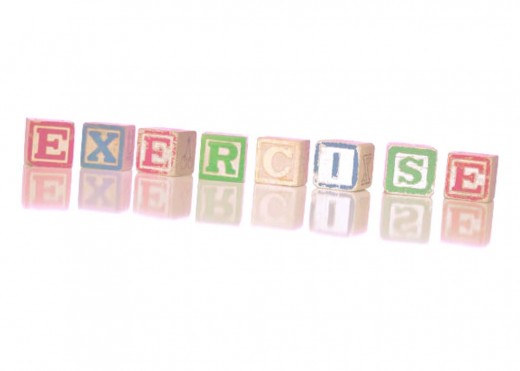- HubPages»
- Health»
- Quality of Life & Wellness»
- Personal Development
Setting Goals : A Strategy for Success.

What influences the success of achieving a goal?
Health care professionals help clients achieve goals as they progress through the continuum of health. As a nurse I learned that there are many theories on how an individual sets, achieves, and maintains goals. Throughout my career I attended numerous lectures and seminars detailing theories that encourage clients to successfully reach their goals. There are two factors that strongly influence a positive outcome. They are the importance and confidence that an individual feels about their ability to achieve the goal. An evaluation of these two emotions prior to setting a goal has personally helped me maintain a healthy diet, stick to a daily exercise routine, attempt new things, and achieve success rather than failure.

Rating the Importance and Confidence of a Goal.
Why is determining the importance and confidence of ones’ abilities to achieve the goal a crucial indicator for success?
Let’s examining how these two emotions are intertwined in the decision making process. If one believes achieving a goal is important but lacks confidence in their abilities of reaching a positive outcome the goal is abandoned. Especially if the attempts are sabotaged with minimal results from the originally designed goal. Lack of self confidence results in frustration and decreased self worth. How many times do you “beat yourself up” when you've slipped from a diet because you indulged in a piece of chocolate?
Vice versa, if one is very confident they can achieve the goal, but it is not important. Initiation may be postponed or never attempted.

Importance and Confidence as a Tool to Achieve Success.
Setting a goal using importance and confidence indicators as a tool promotes a successful outcome.
Assigning a scale from 1 to 10 to both importance and confidence provides a visual indicator showing you if the two emotions match up to your goals. The best outcome for success is if both importance and confidence have the same numeric rating.



It is not unusual for the numbers to match both in importance and confidence at the start of a goal.
Many of us make resolutions to loose weight, exercise, and quit smoking at the onset of the New Year. Thousands of dollars are spent by consumers on weight loss programs, exercise equipment, and drugs. We have every intention of accomplishing our goals.
Yet, for many the attempt to commit to our New Year’s resolutions falls to the wayside. The treadmill becomes a clothes hanger; we gain instead of loose weight, and resolve to quit smoking next year.

Implementing the Importance and Confidence Indicators.
Now let’s examine how you feel about accomplishing a goal by implementing the importance and confidence scale.
For example; you decide that you want to improve your health by exercising. The goal is to run 30 minutes everyday and eventually complete a 5K run/walk in your community.
You feel great, motivated and committed. You rate yourself a number 10 for importance, and a 9 for confidence in your abilities to accomplish the goal.

Ten minutes into the run your legs ache, chest hurts, you feel short of breath and you start walking. Thirty minutes everyday now seems like a long time to suffer. You start to have doubts that you can even walk for 30 minutes much less run that long. You determine that it is important for you to accomplish this goal, but your confidence has decreased to a dismal low. Do you stop?
Now let’s see how you feel about accomplishing this goal by using the importance and confidence scale. You assign a number 10 to the importance of achieving this goal because you really want to participate in the 5k run/walk, but you rate your confidence a number 4.
The importance and confidence scale allowed you to modify your goal. It is a fluid tool that brings success by constant assessment, modification, and measurement of your goal. You are the architect and designer of how you want to reach your goal of doing a 5K run/walk. It is a step by step approach building the confidence you need to accomplish the goal.
For example: You modify the goal of running for 30 minutes everyday to walking the first month of the program. That’s OK. The plan will be evaluated after one month.
Depending on your accomplishments you can determine if you want to keep the plan the same, modify, or change the approach towards achieving the goal. Remember “baby steps.”
You are in charge to determine how you want to move forward to achieve your goal of running 30 minutes every day and eventually completing a 5K run/walk. It is helpful to keep a log to document your progress and to assess your importance and confidence scale. This can be done daily, weekly, or monthly.
After one month your log shows that you are able to comfortably walk for 30 minutes every day. You now feel strong enough to incorporate running into your daily routine. You have the choice to decide what to do next. Every plan has a timeline that allows for a measurement or assessment of your progress to achieve your long term goal. You are the one in charge and in control of your behaviors.

Importance and Confidence Log.
Keeping a log for documentation is a very important component for success using the importance and confidence tool. Tony Horton's statement in one of his P90X DVD’s “How do you know what to do… if you don’t know what you did?” is so true in accomplishing any goal. This tool allows you to keep moving forward. It gives the goal setter an opportunity to measure success and determine their own timeline. It allows you to assess feelings and emotions, which can determine the success or failure of achieving any goal.
Whether you want to loose weight, quit smoking, exercise, or become a Hub page author, using this tool will help you become successful.









